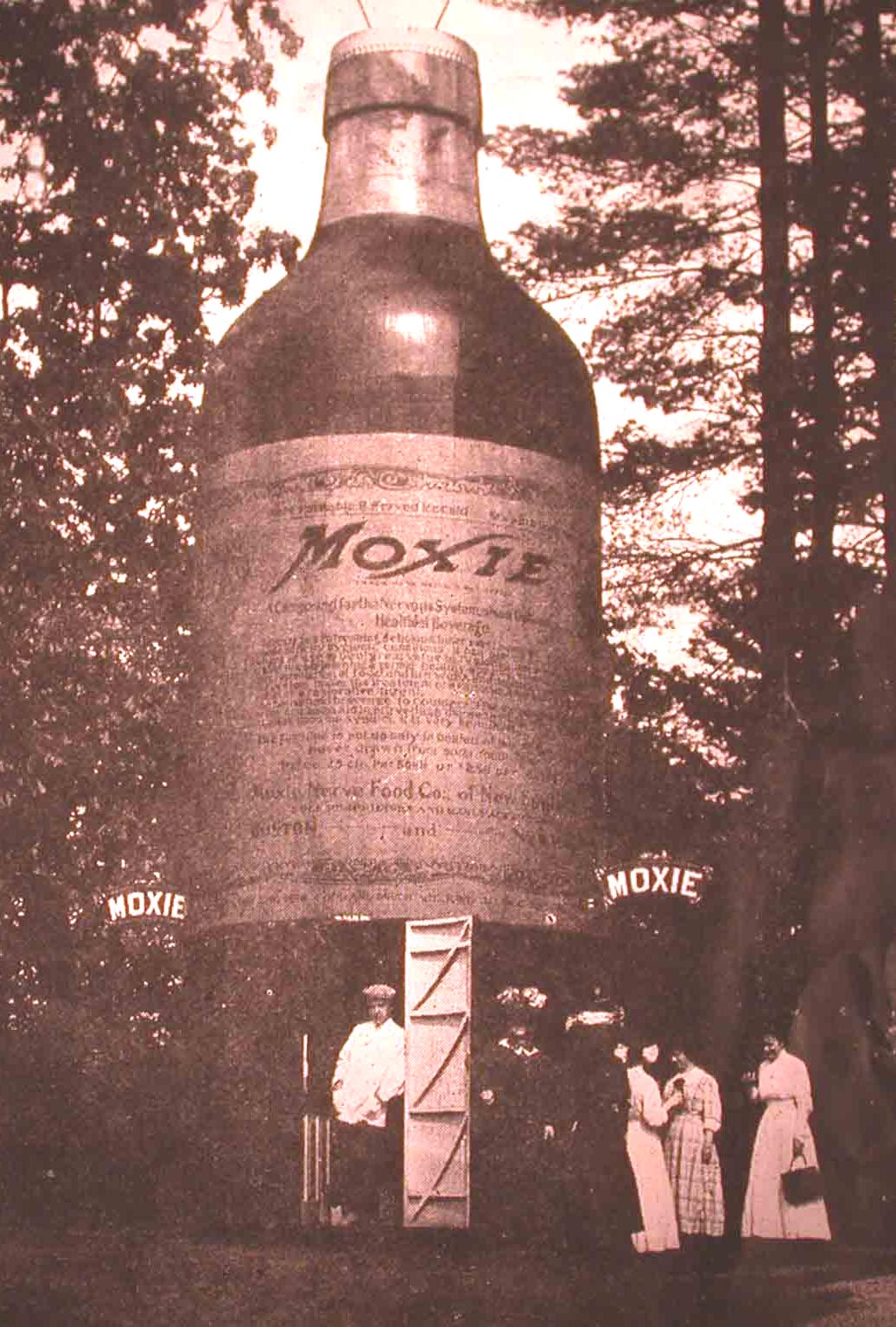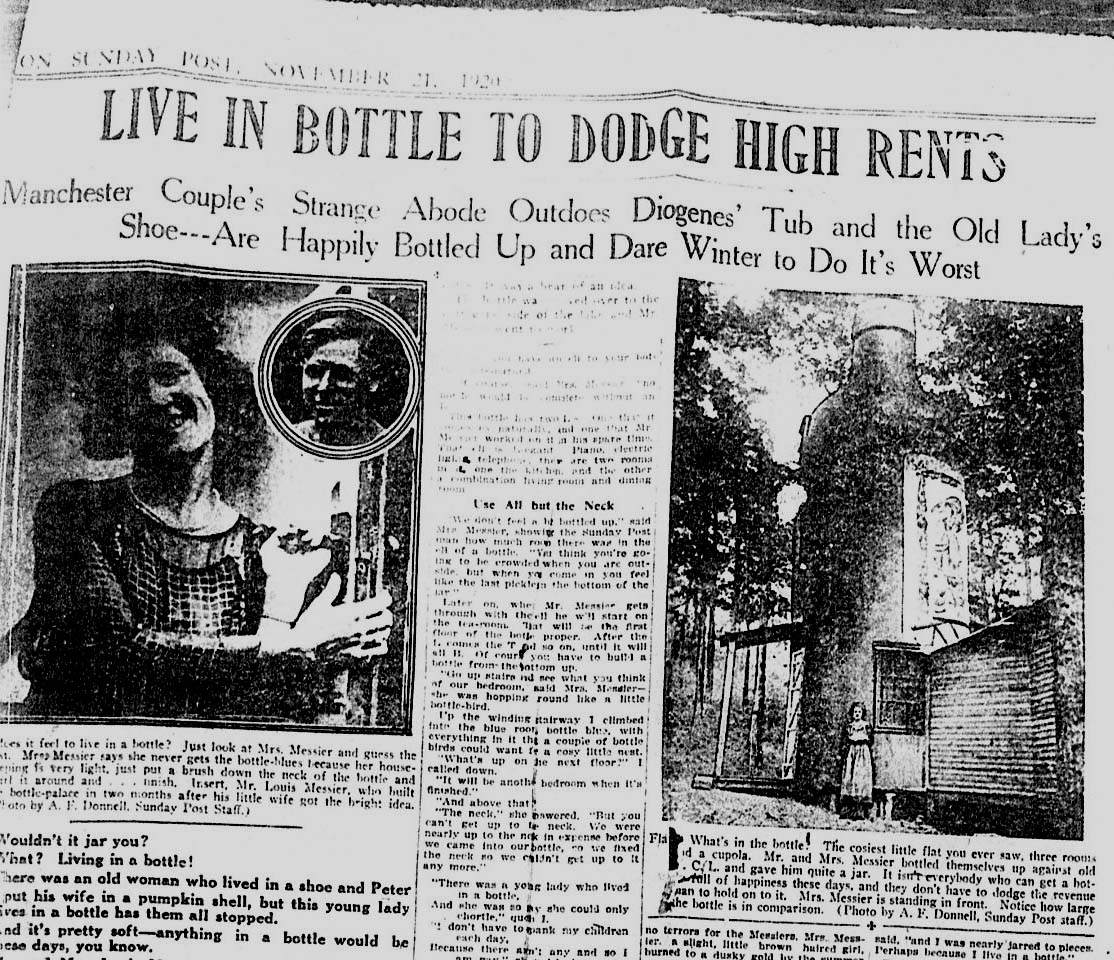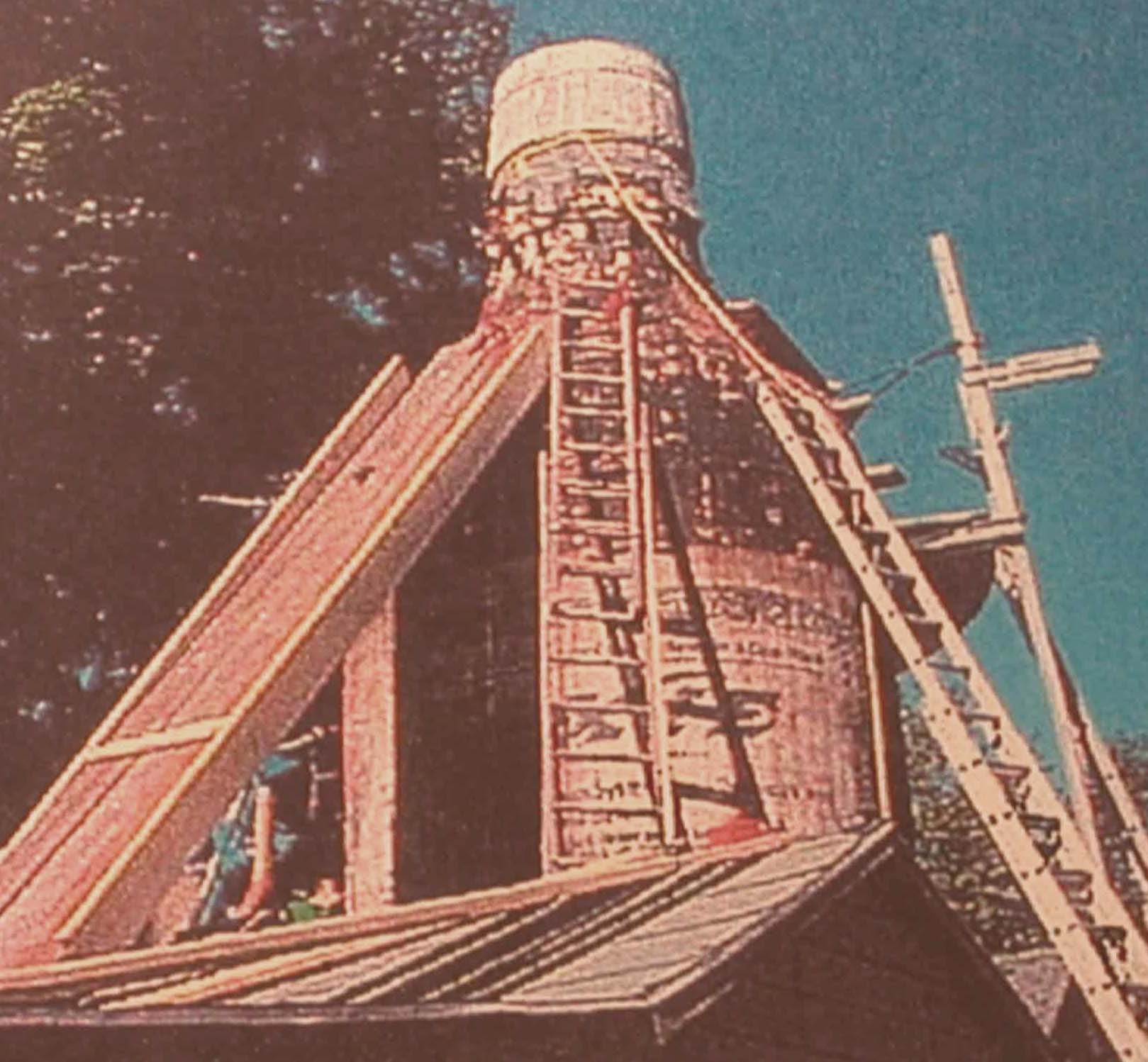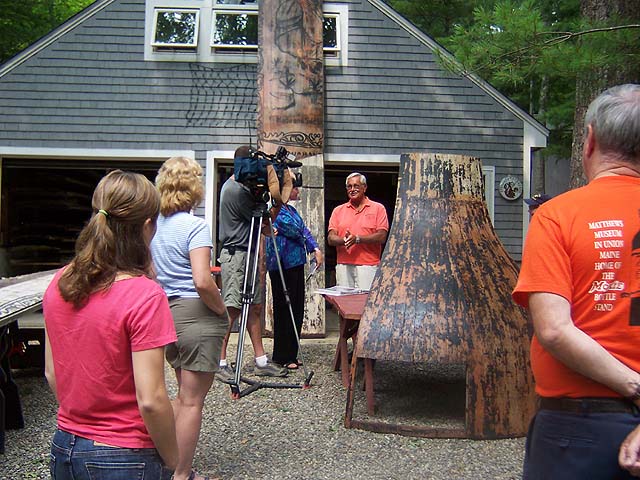
|
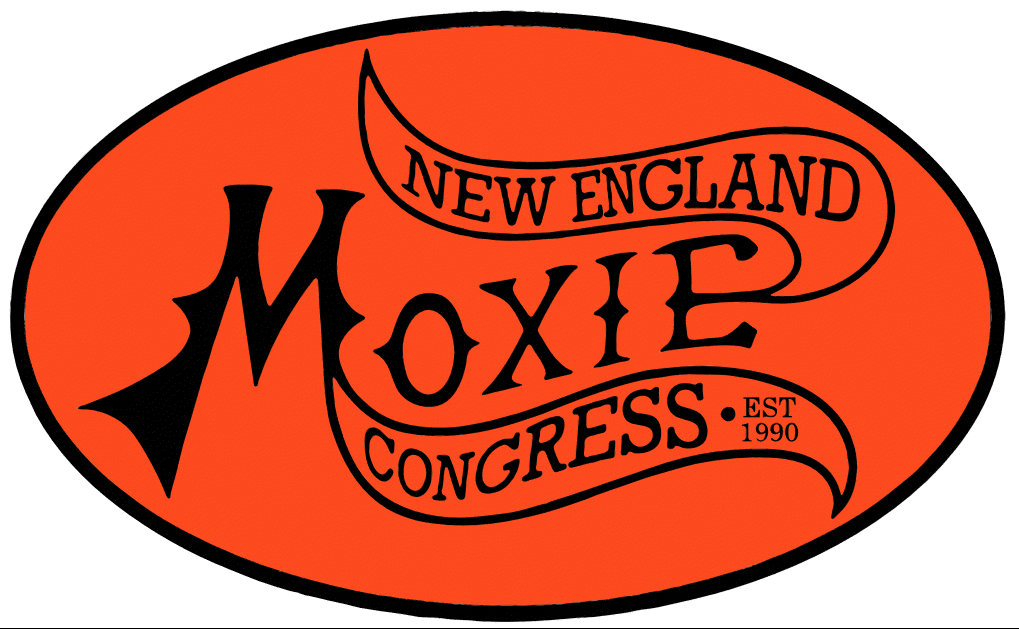  |

|
 |
 |
|
An effort to keep an important artifact of American advertising art alive and well as the centerpiece of the new MOXIE MUSEUM annex of the Matthews Museum in Union, Maine
|
|
|
This is the story of a campaign to
preserve and restore a somewhat obscure example of Commercial mimetic
architecture, not overwhelmingly remarkable in terms of aesthetic merit
or historical significance, but with an unusual human twist.
|
|
|
The powers-to-be at Moxie decided to design a trade show booth which was a 32' high by 10' diameter replica of the distinctive Moxie bottle, complete with label and bottle cap, with doors and windows used to purvey samples of the distinctive beverage to the clamoring public. This Bottle Stand was of oak, spruce, and New England pinewood construction, designed with pin-connected sections which could be easily dismantled, transported, and reassembled in "road show" fashion. Its first known display was at the New England Food Fair at Mechanics Hall in Boston in the Fall of 1907. It was acclaimed in the press as an "immense novelty overtopping other structures". The Boston Traveler hailed it as a "monument to nerve building - a striking feature of the big Food Fair". |
|
|
Between 1908 and 1909 it was displayed at various venues, including a stint at Luna Park in Coney Island NY. In 1910 it arrived for "permanent" display at Pine Island Amusement Park in Manchester NH.
The Park was owned by the Manchester Traction, Light, and Power Company which had established it as an end-of-the-trolley-line park, typical of many early in the century. This Park was situated on a recreational pond, and featured cottage building lots for lease by summer residents along the shoreline.
During its stay the Bottle was repainted
at least once, and its label was redone from time to time to reflect logo
and company name changes (from "Moxie Nerve Food" to the familiar "MOXIE"
with the swooping crossbar on the "X"). |
|
|
For some reason the Moxie Company decided to abandon the use of Bottle Stands as promotional media by the late teens.
Perhaps it was in the wake of hardships encountered in the aftermath of World War I, but more likely it was because of the increasing popularity of the Moxie Horsemobiles which were the most eye-popping advertising gimmicks of the era. It probably started to make much more sense to Moxie Management to invest in a widespread fleet of these mobile attention-getters rather than maintaining a now-mundane stationary kiosk or two.
|
|
|
Neighborhood kids and their friends now recall the excitement they felt when first permitted to climb inside the bottle and to peer out the observation window in its neck. The Bottle House survived the flood of 1936 and the great hurricane of 1938 with minimal damage. During World War II, pilots flying into Grenier Army Airbase (now Manchester-Boston Regional Airport) were known to have used the 4' silver-colored cap on top of the Bottle House as a navigational aid. |
|
|
By
mid-century the House had become a local tourist landmark.
|
|
|
Shortly thereafter, however, it
was sold and did change hands a few times.
NEMC members Dave Lowell and Paul Hemen bought it and in 1999 carefully and methodically unshingled, dismantled, and removed the Bottle portion from the rest of the cottage, loaded the pieces in a U-Haul, moved them to a storage facility in Maine. After the dust settled they began to ponder what in the dickens they were going to do with their unique but awkward treasure. There was no question that somehow, this fragile relic had to be saved for posterity, but how? With NEMC treasurer Judy Gross leading the pack, a "Friends of the Moxie Bottle House" group was formed, and within days enough money was raised to buy the Bottle House from Dave and Paul. The Matthews Museum in Union ME (birthplace of Moxie founder Augustin Thompson) was contacted, and the ball started rolling to establish their museum as the final exhibit site and resting place of the Moxie Bottle House. End of story? - - - not quite - - - |
|
|
Much
more remains to be done. Measures have been taken preserve the
century old wooden structure and its faded and peeling painted finish, and
a building which has been designed to house and properly
display this immense bottle structure and protect it from the elements has
now been built, but ongoing care and maintenance must be provided for. In short, a lot of
help is still needed! By now, there is undoubtedly a lump in your throat, a tear in your eye, some fire in your belly, and your nerves are being fed by the thought of a sip of Moxie passing through your lips. Join the crusade! Travel the Maine Moxie Trail (see link on home page) and go downeast to Union and see the Moxie Museum annex of the Matthews Museum, where the Bottle House now resides, or see below to find out more about how you can further help with the campaign to keep this portion of our heritage alive for future generations who need to know what it really means to "have plenty of Moxie". |
|
|
One way to help support this project and in the process get some neat teeshirts, hats, and other goodies directly from the Matthews Museum...click HERE for info. Any and all additional donations to support the Moxie Museum Annex are always gratefully accepted! Make checks out to Matthews Museum (Moxie) and send to Matthews Museum, POB 582, Union ME 04862....and thank you for any help you may choose to provid. |
|
|
|
|
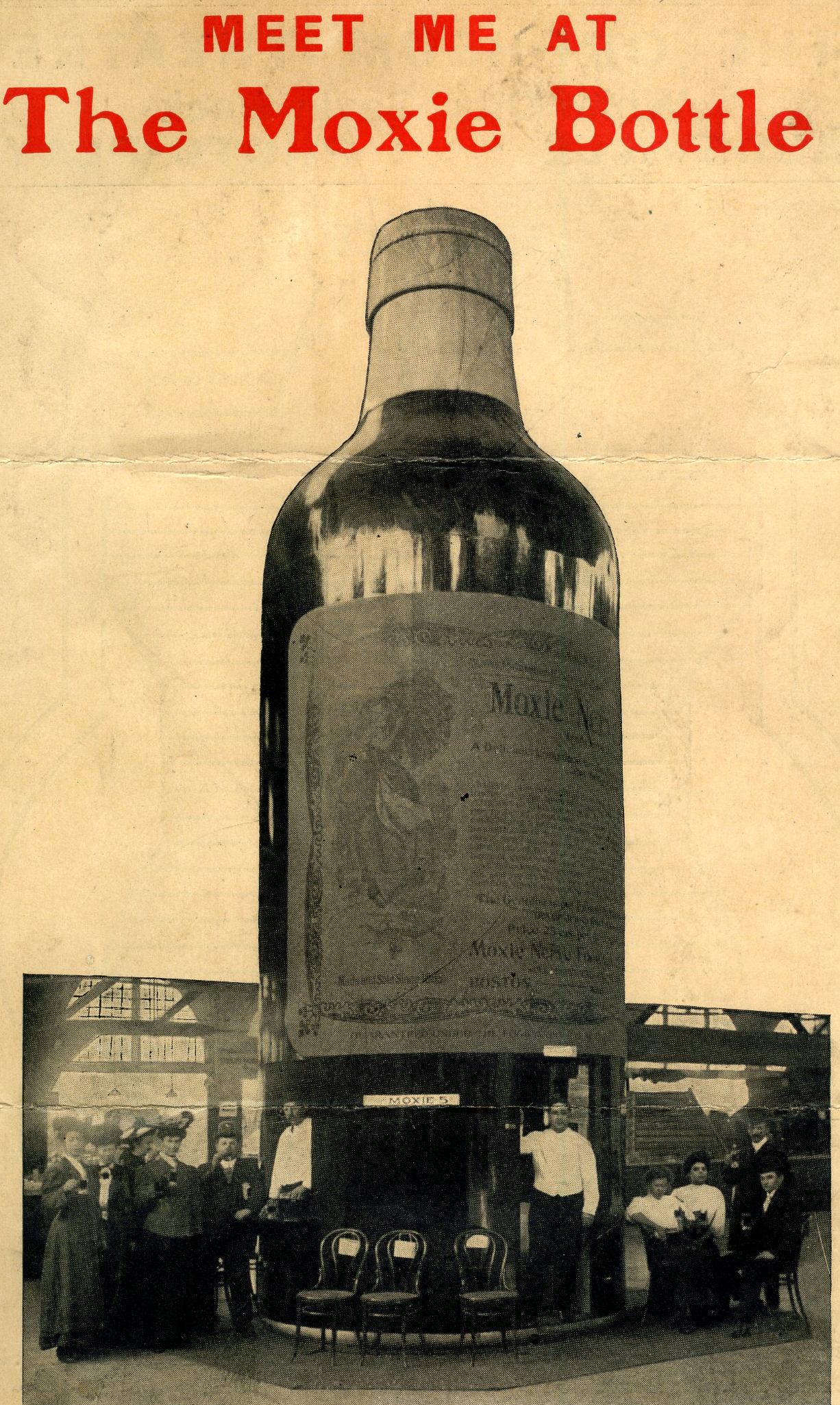 Pictured
right is the first (of two known, and the only
one remaining) Moxie Bottle stand, probably in late 1907, on display at the
Food Fair in Boston.
Pictured
right is the first (of two known, and the only
one remaining) Moxie Bottle stand, probably in late 1907, on display at the
Food Fair in Boston. 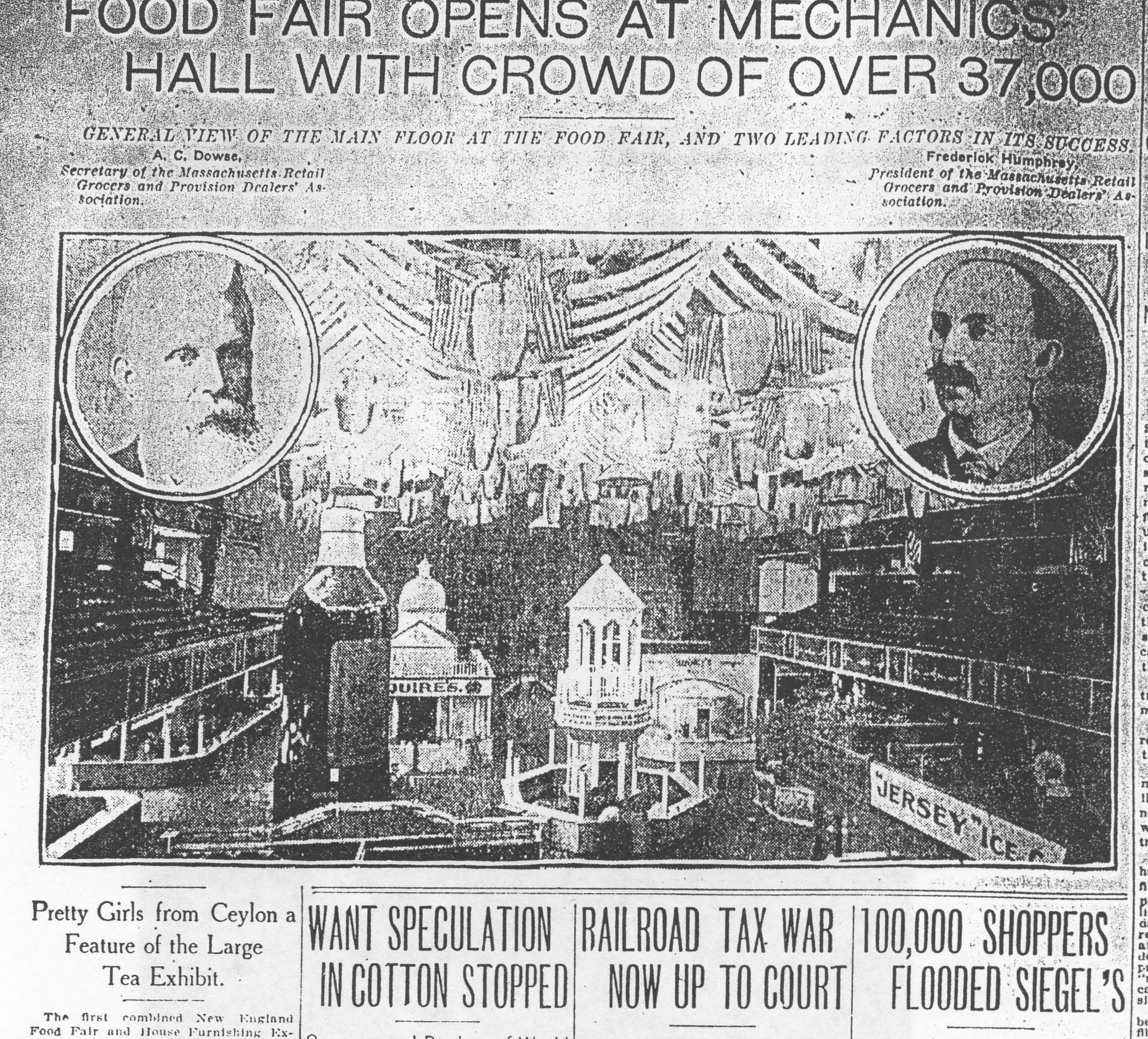 One vehicle for doing so was
participation in a number of then-popular Food Fairs and Domestic
Science Expositions.
One vehicle for doing so was
participation in a number of then-popular Food Fairs and Domestic
Science Expositions.
